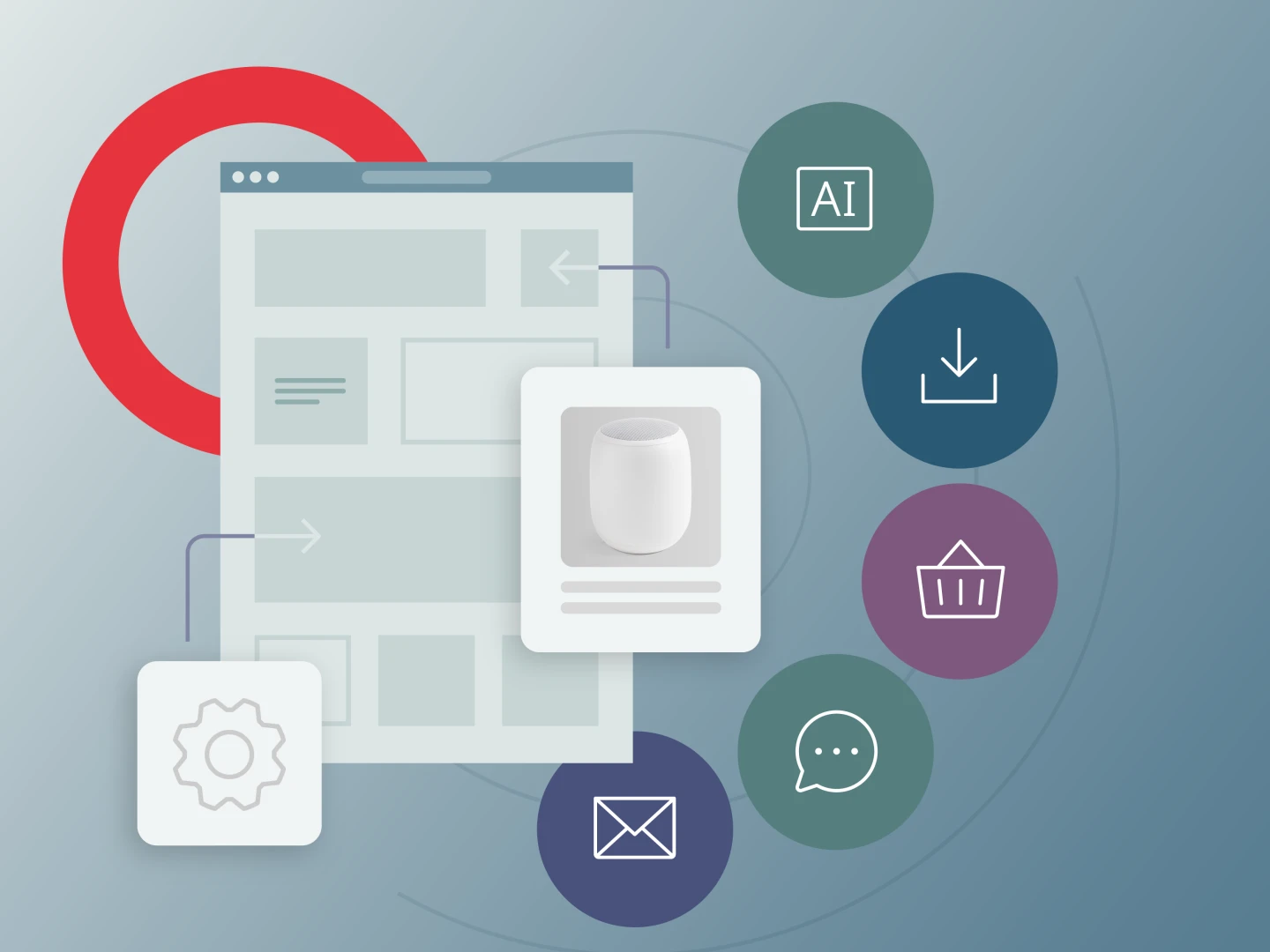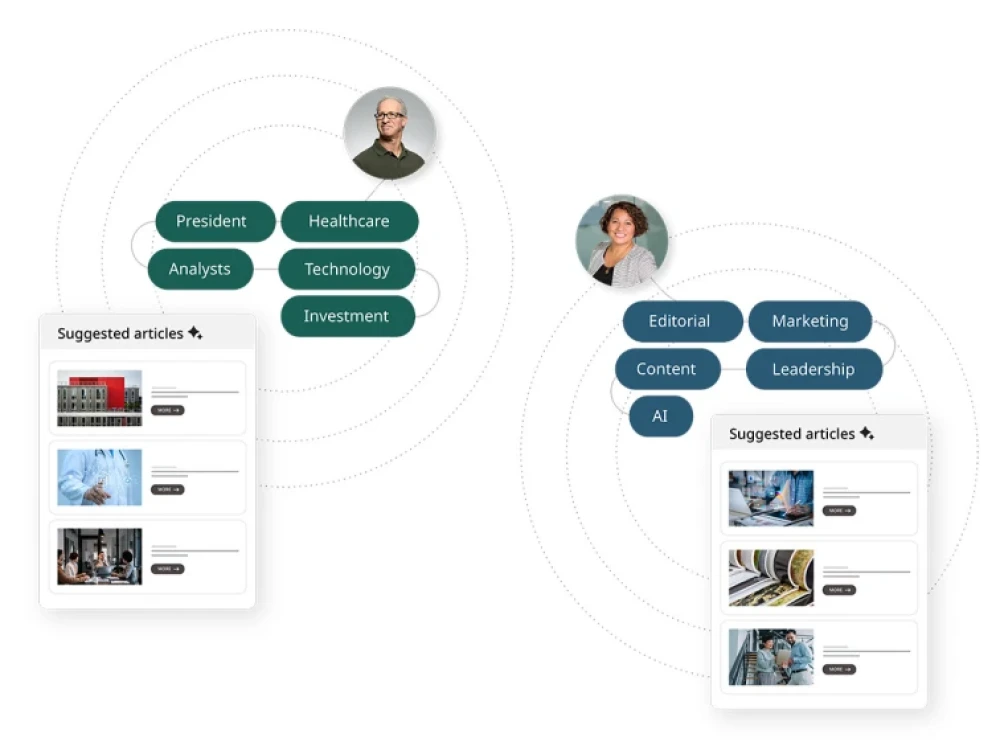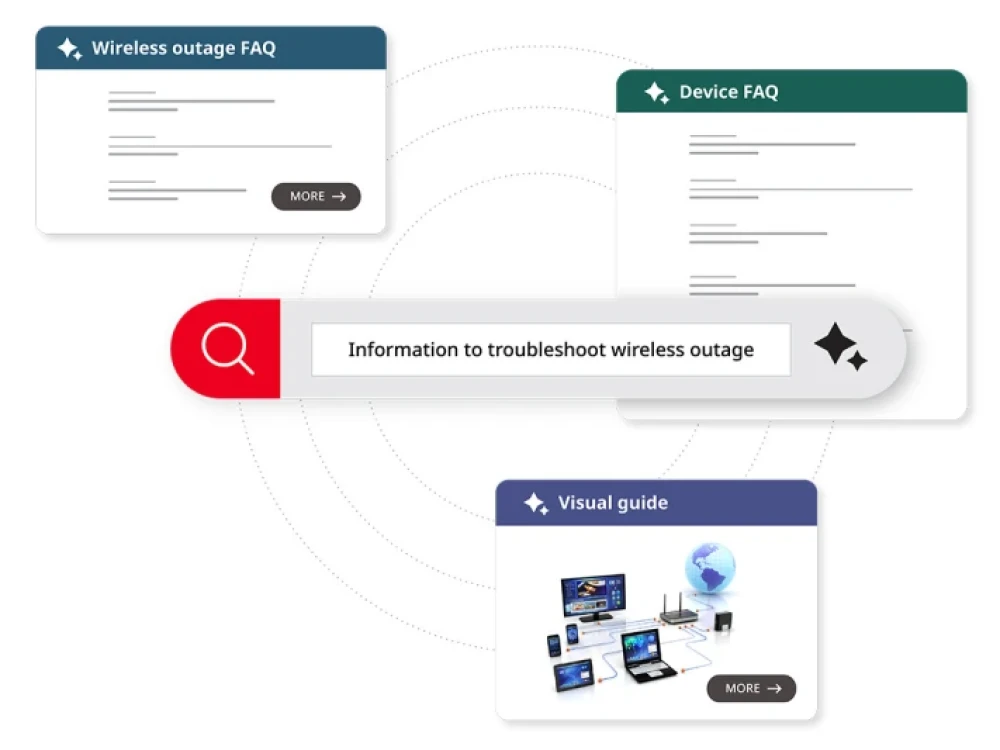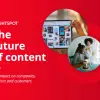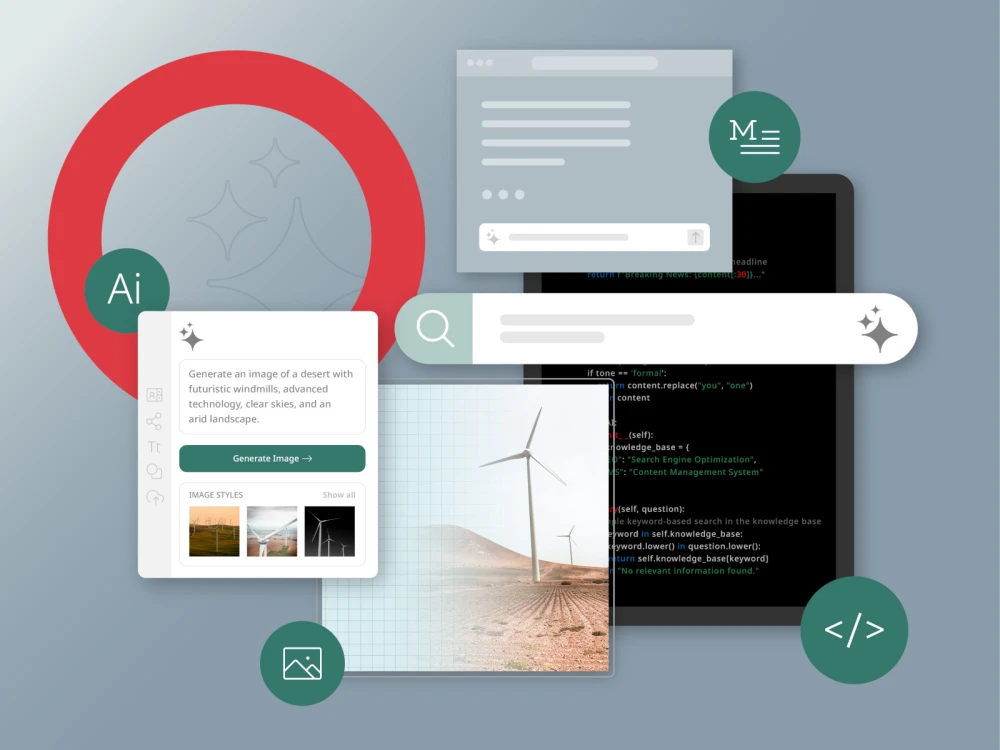Understanding the concept of content personalization
Content personalization involves tailoring content to meet the specific needs and preferences of each user. This approach leverages data from various sources like browsing history, purchase history and demographic information.
For example, an e-commerce website might use a visitor’s browsing habits to recommend products they are likely to buy. Similarly, email marketing campaigns can send personalized messages based on a user’s previous interactions with the brand.
Behavioral data plays a crucial role in this process. By analyzing how users interact with content, businesses can deliver more relevant and engaging experiences. This not only enhances user satisfaction but also increases the likelihood of conversions.
Demographic personalization is another effective strategy. Tailoring content based on age, location and other demographic factors ensures that the content resonates well with different audience segments.
Lastly, personalization engines and tools can automate much of this work, making it easier for businesses to implement effective personalization strategies at scale.
Why personalized content is important
Personalized content is vital because it creates a more engaging and relevant experience for users. By tailoring content to individual preferences, businesses can significantly improve user satisfaction and loyalty.
Data-driven personalization helps in understanding customer behaviors and preferences more accurately. This allows for the creation of content that resonates deeply with users, making them more likely to engage and convert.
Here are some key benefits of personalized content:
- Enhanced user engagement: Tailored content keeps users interested and encourages them to spend more time on the site.
- Improved conversion rates: Relevant recommendations and content increase the chances of users making purchases.
- Customer loyalty: Personalized experiences make users feel valued, fostering long-term loyalty.
Moreover, personalized content can adapt in real-time, ensuring that users always receive the most relevant information based on their current behavior and context. This dynamic approach not only boosts engagement but also drives higher conversions and revenue for businesses.
The role of AI in content personalization
AI-driven personalized recommendations leverage machine learning algorithms to analyze user data and predict preferences. This process involves several key steps:
- Data collection: Gathering user data from various sources such as browsing history, purchase history and demographic information.
- Data analysis: Using AI to analyze patterns and trends within the collected data.
These steps enable the creation of highly targeted content and product recommendations. For instance, an e-commerce platform might suggest products based on a user’s previous purchases and browsing behavior.
Personalized recommendations enhance user engagement by presenting items that are highly relevant to each individual. This can lead to increased conversion rates and customer satisfaction.
Moreover, AI-driven recommendations are not static; they continuously learn and adapt from user interactions. This dynamic nature ensures that the recommendations remain relevant over time, providing ongoing value to both users and businesses.
AI and dynamic content personalization
AI significantly enhances dynamic content personalization by continuously adapting to user interactions. It uses sophisticated algorithms to analyze vast amounts of data in real-time, allowing businesses to deliver content that matches individual user preferences.
For instance, AI can dynamically adjust website layouts based on user behavior, ensuring each visitor sees the most relevant information. This might include personalized landing pages that change according to the user’s browsing history or geographic location.
Moreover, AI can generate personalized emails that cater to specific user interests, increasing the likelihood of engagement. The use of AI in dynamic content personalization also extends to:
- Interactive quizzes: Tailored to user interests, offering personalized results and recommendations.
- Product recommendations: Based on past purchases and browsing patterns, enhancing the shopping experience.
AI’s ability to adapt content in real-time ensures that users receive a personalized experience, leading to higher satisfaction and loyalty.
Examples of AI in personalized marketing
AI in personalized marketing is transforming how brands connect with their audiences. One notable example is Netflix, which uses AI to recommend shows and movies based on a user’s viewing history and preferences. This not only keeps users engaged but also helps the platform retain subscribers.
Amazon leverages AI to provide personalized product recommendations. By analyzing browsing history, previous purchases and interaction patterns, it suggests items that users are likely to buy, enhancing their shopping experience.
AI is also used in email marketing campaigns. Companies like Coca-Cola send tailored emails to different audience segments, increasing open and click-through rates. These emails might include personalized subject lines and content based on user behavior and preferences.
In the automotive industry, BMW employs AI to personalize in-car experiences. The system adapts to driver preferences, such as seat adjustments and climate control settings, for a more comfortable and customized driving experience.
Developing a content personalization strategy
Identifying marketing personas for personalization
To effectively identify marketing personas for content personalization, start by conducting thorough research. This includes analyzing demographic data such as age, gender, location and education level. Understand their behaviors and preferences through surveys, social media analysis and customer feedback.
Next, delve into psychographics to uncover their interests, values and pain points. This helps in painting a fuller picture of who they are and what motivates them. You should also consider their purchasing decisions and habits to tailor your content accurately.
Once you gather this data, segment your audience into distinct personas. Give each persona a name and a detailed profile, including their goals and challenges. This makes them more relatable and easier to target with personalized content.
Use these personas to craft specific messages and content that address their unique needs. Employing data-driven insights ensures that your content resonates deeply, enhancing engagement and conversion rates.
Creating customized web experiences
Personalized web experiences are crafted by leveraging user data to customize content and design elements. This can be done by analyzing user behavior, preferences and past interactions to display relevant information.
For example, a website can use dynamic content to show different headlines, images and calls-to-action based on the visitor’s previous interactions or demographic data. This ensures that each user sees content that resonates with their interests.
Another approach is the use of personalized landing pages. These pages can adapt based on the referral source, such as a social media ad or email campaign. By tailoring the content to match the visitor’s entry point, you increase the likelihood of engagement and conversion.
Real-time personalization is also effective. By utilizing AI and machine learning, businesses can adjust content on the fly, ensuring it remains relevant as user preferences evolve. This can include personalized product recommendations on e-commerce sites or specific blog posts highlighted for returning visitors.
Moreover, integrating personalized pop-ups and banners based on user actions or geolocation can drive engagement. For instance, showing a discount offer to users from a specific city or promoting a local event can make the user experience more relevant and engaging.
The 4 “Ds” of personalization strategy
The 4 Ds of personalization strategy are essential to creating a robust and effective content personalization framework. These four components include:
- Data: Gathering comprehensive data about your users is the foundation. This includes demographic information, browsing history, past purchases and engagement metrics. Having rich data allows for more accurate personalization.
- Decisioning: This involves using the collected data to make informed decisions about what content to deliver to each user. Advanced algorithms and AI can analyze patterns and predict preferences, enabling real-time content adjustments.
- Design: Tailoring the design of your content to match user preferences can significantly enhance engagement. This could involve personalized landing pages, dynamic images and customized calls-to-action.
- Distribution: Ensuring that personalized content reaches users through the right channels at the right times is crucial. This might include email campaigns, social media or on-site content adjustments.
Implementing these four elements effectively can lead to a more engaging and personalized user experience.
Personalized needs and user experience
To achieve a truly personalized user experience, it’s essential to understand the unique needs and preferences of your audience. Start by collecting and analyzing data such as browsing behavior, purchase history and demographic information. This data provides valuable insights into what users are looking for and how they interact with your content.
Consider employing AI and machine learning to automate the personalization process. By leveraging these technologies, you can dynamically adjust content and recommendations in real-time. For instance, an e-commerce site can use AI to suggest products based on a user’s past purchases and current browsing activity.
Personalized content isn’t limited to product recommendations. You can also customize email campaigns, landing pages and even pop-up messages to align with user interests and behaviors. Tailoring these elements ensures that each user feels recognized and valued.
Personalization goes beyond just content. Customizable user interfaces allow users to adjust layout, colors and other visual elements to suit their preferences. This level of customization can significantly enhance user satisfaction and engagement.
Content management systems (CMS) for personalization
The role of a CMS in content personalization
A CMS serves as the backbone for content personalization by gathering and analyzing user data such as browsing history, purchase behavior and demographic information. This data enables the CMS to deliver tailored content that resonates with individual users, enhancing their experience on the website.
Modern CMS platforms often come with built-in tools that support personalization, making it easy for marketers to create dynamic, user-specific content. For example, a CMS can automatically display product recommendations based on a user’s past purchases or browsing patterns.
Here are some features to look for in a CMS to maximize content personalization:
- Content segmentation: Allows you to group users based on shared characteristics for targeted messaging.
- AI integration: Enhances personalization by using machine learning algorithms to predict user preferences.
- Real-time content updates: Ensures content remains relevant by adapting to user interactions in real time.
These features make a CMS an invaluable tool for delivering personalized experiences that drive engagement and conversion rates.
Selecting the right CMS for your needs
Selecting the right CMS can significantly impact your content personalization efforts. Start by identifying your specific needs and goals. Are you looking for a CMS that supports multilingual content, or one that integrates seamlessly with your existing marketing tools?
Consider the level of technical expertise within your team. Some CMS platforms are more user-friendly and cater to non-technical users, while others offer advanced features requiring a higher technical skill set.
Look for essential features such as:
- Content personalization capabilities: Ensure the CMS can segment and target content based on user behavior and demographics.
- Scalability: Choose a CMS that can grow with your business and handle increasing traffic and content volume.
- Integration options: The CMS should integrate easily with other tools, like CRM systems and email marketing platforms.
By focusing on these aspects, you can select a CMS that aligns with your personalization strategy and supports your business objectives effectively.
Examples of CMS platforms with personalization tools
Many of the top CMS platforms, including Brightspot, are equipped with personalization tools. These platforms offer robust capabilities to create tailored content experiences based on user behavior and preferences.
For example, Brightspot integrates with customer data platforms (CDPs) like Piana to deliver highly personalized content by analyzing user interactions and historical data. This allows businesses to engage visitors with content that resonates on a personal level.
Look for a CMS that combine content management with powerful personalization engines, whether from a third-party or custom built, making it easy to deliver dynamic, user-specific content. It leverages audience intelligence to segment users and provide relevant recommendations.
Brightspot also stands out for its seamless integration with marketing and sales tools including HubSpot and Marketo, for example. It uses smart content features to customize website pages for different visitor segments, enhancing engagement and conversion rates.
The right CMS platform will allow businesses to elevate their content personalization strategies efficiently.
Media and content personalization
The importance of personalization in media and publishing
In the media and publishing sector, content personalization is not just a trend; it’s a critical strategy that drives audience engagement and loyalty. By delivering tailored content experiences, media companies can increase readership, enhance user satisfaction and build long-term subscriber relationships.
Using AI-driven personalization tools, publishers can analyze audience behavior and preferences to serve content that resonates on an individual level. This approach not only improves the relevance of the content but also boosts metrics like time on site, page views, and subscription rates.
Common applications of content personalization in media
- Homepage customization: Tailoring news and articles based on a reader’s past interactions and interests.
- Personalized newsletters: Sending curated content to subscribers based on their reading history.
- Targeted notifications: Alerting users to breaking news or updates in topics they frequently follow.
These personalized interactions make readers feel understood and valued, fostering a deeper connection with the brand and leading to higher engagement and retention.
Media case studies: Successful content personalization
Many media companies have leveraged Brightspot CMS to enhance their content personalization strategies, achieving significant success.
For instance, a leading news organization used Brightspot’s dynamic content features to create a personalized homepage experience for each visitor. By analyzing user behavior, the platform delivers content that aligns with individual interests, leading to a 15% increase in page views per session.
Another example is a major digital publisher that implemented personalized newsletters through Brightspot. By segmenting their audience and sending customized content, they saw a 20% rise in email open rates and a notable increase in subscriber retention.
A prominent magazine publisher also utilized Brightspot’s advanced segmentation capabilities to tailor content for different audience segments. This strategy resulted in a 12% growth in digital subscriptions, demonstrating the power of personalized content in driving revenue.
Choosing a CMS for media personalization
When selecting a CMS for media and publishing personalization, key features to consider include:
- Real-time content adaptation: Automatically adjust content based on user engagement patterns.
- Advanced user segmentation: Develop detailed audience profiles for more precise targeting.
- Cross-platform consistency: Ensure personalized experiences are consistent across web, mobile and email channels.
These features empower media companies to deliver highly relevant content experiences, ultimately leading to stronger audience engagement and increased loyalty.
E-commerce and content personalization
The importance of personalized recommendations in e-commerce
Personalized recommendations in e-commerce are more than just a convenience; they are a strategic tool that significantly enhances customer satisfaction and boosts sales.
Using AI-powered recommendation engines, businesses can analyze vast amounts of consumer data to suggest products that align with individual preferences. This not only helps in curating a more engaging shopping experience but also increases the likelihood of conversions.
Here are some common applications of personalized recommendations:
- Homepage recommendations: Highlighting deals and new arrivals based on user history.
- Cart page suggestions: Offering complementary products to items already in the cart.
- Email campaigns: Sending targeted recommendations based on past purchases.
These personalized touches make customers feel valued and understood, which can lead to higher retention rates and customer loyalty.
Furthermore, real-time recommendations ensure that the content remains relevant, adapting to the user’s ongoing interactions and preferences.
E-commerce case studies: Successful content personalization
Brands like Sephora and Alo Yoga have excelled in leveraging content personalization to drive customer engagement and sales. Sephora uses personalized email campaigns and recommendations based on purchase history and browsing behavior. This strategy has resulted in higher conversion rates and improved customer loyalty.
Alo Yoga focuses on community-building by creating personalized experiences through user-generated content and targeted social media campaigns. This approach has enhanced customer interaction and brand loyalty.
Another example is Nike, which tailors its website content and offers exclusive rewards through the Nike Plus program. This has led to increased customer retention and acquisition.
These case studies highlight effective strategies such as personalized email marketing, user-generated content and exclusive rewards programs. These personalization tactics have proven successful in boosting both engagement and sales.
E-commerce platforms with advanced personalization features
Every digital transformation has its own unique drivers. For one e-commerce company using Brightspot, the overarching priority was to create a scalable framework for future expansion without impeding its number-one goal: continued growth in online sales.
The foundational flexibility of Brightspot facilitated a headless implementation with the site’s new e-commerce layer. Paired together, the platform relaunch was delivered without losing any of the momentum the company had earned in the months leading up to the migration.
“The first quarter of 2022 was wholly on the old CMS and website,” said a company representative. “Q1 of this year was fully on the new CMS and e-commerce layer. For me, the story is that we took a site that was growing at a tremendous clip, replatformed in a major way and did not disrupt that growth.”
The results tell the story.
Revenue has increased 24% along with 11% growth in online orders. This has included a notable increase in the number of lines with each customer’s order. What does this mean for the e-commerce seller? It’s easier for users to find, select and purchase more complex orders through a faster, more personalized and more intuitive user interface.
When choosing a CMS to power e-commerce personalization, key features to look for include:
- Dynamic content personalization: Tailor content in real-time to user preferences.
- Advanced segmentation: Create highly specific customer segments based on detailed data.
- Multichannel integration: Ensure consistent personalization across web, email and mobile.
These features enable businesses to deliver relevant, engaging experiences, ultimately leading to higher conversion rates and customer loyalty.
B2B content personalization strategies
Understanding the B2B persona for effective content personalization
B2B personas are detailed representations of your ideal business customers. They include information such as industry, job role, challenges and goals. By understanding these elements, you can create content that speaks directly to their needs.
For example, a marketing manager might be interested in strategies for increasing lead generation, while a financial officer might focus on cost-saving solutions. Tailoring content to address these specific concerns makes your message more relevant and engaging.
Data-driven insights are crucial. Analyzing past interactions, purchase history and behavioral data helps in crafting personalized messages. This approach ensures your content is not only relevant but also timely.
Using audience intelligence apps can further refine your targeting. These tools analyze user behavior to provide actionable insights, enhancing the personalization process. The goal is to make each interaction as meaningful and impactful as possible.
B2B case studies: Successful content personalization strategies
One standout example is IBM’s approach to B2B content personalization. By utilizing AI algorithms, IBM tailors its content to meet the specific needs of different industries. For instance, their AI-driven platform, Watson, analyzes user behavior and preferences to deliver highly personalized content. This approach has significantly increased engagement and lead generation for IBM.
Another successful case is from a leading global consulting firm using Brightspot CMS. The organization needed to manage a complex network of localized websites across more than 50 countries. Their goal was to enhance content personalization and localization, but their existing CMS was limiting their ability to do so effectively.
By implementing a modular content approach with Brightspot, the firm was able to create content once and publish it everywhere, efficiently managing localization and personalization across regions. Brightspot’s advanced features allowed them to share content seamlessly, reducing the need for repetitive tasks and enabling quick content updates.
The firm saw significant improvements in publishing efficiency and user engagement. With Brightspot, they streamlined content management, enabling personalized experiences for global audiences while minimizing the workload on their editorial teams.
Benefits of B2B content personalization
Increased engagement is one of the primary benefits of B2B content personalization. By tailoring content to the specific interests and needs of individual users, businesses can capture and maintain the attention of their target audience. This results in longer website visits, higher content consumption and more meaningful interactions.
Personalized content also boosts conversion rates. When potential customers receive information that directly addresses their pain points and goals, they are more likely to take action. This could be downloading a whitepaper, signing up for a webinar or making a purchase.
Another significant advantage is the enhanced customer experience. Personalized content demonstrates that a business understands and values its customers, fostering loyalty and trust. This leads to stronger, long-term relationships and increased customer retention.
Finally, personalized content allows for more effective use of marketing resources. By focusing efforts on the most relevant and impactful content, businesses can optimize their marketing spend and achieve better ROI.

